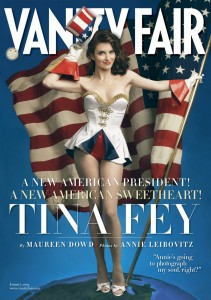Vanity Philanthropy vs. What Matters Where Now?
Vanity Philanthropy and The Ladders Effect
The “do good” space is like a ladder, where the rungs – loosely fitted into shared rails – connect:
- The Needy peoples or condition are at the bottom of the Ladder and need to be on top) in terms of directing resources or priority for addressing which need matters most
- The Metrics describing their need, and the “metrics measurers” creating the accountancy for those in need, as an unnatural language that often only professionals (social service providers) can navigate or speak
- The Social Enterprise and its leaders who aim to apply market strategies to help those in need, while earning a living and a career for themselves, and who have a bit of conflict of interest in solving the need they become expert at quantifying for their own personal survival
- The Philanthropists, Foundations, Government and Corporate funders who want to address the need, and support nonprofits and social entrepreneurs, while also growing the branding of the funders’ organization
- CSR/ESG/SRI management of funders’ cash and invested assets aims to reduce the toxic impacts that the funders would otherwise cause by unscreened/unfiltered investment policies that maximize stock and bond market returns, while earning enhanced management fees for the additional screening
- The “Social Entrepreneurship” Industry, of nonprofit leaders, social entrepreneurs, funders’ gatekeepers and conference organizers who sell access and anoint the up and coming trending needs and their “stewards”
- Crowd funding, social impact bond and other money pooling strategies that create financial capital aimed at doing good, and generate management fees and profit-participations for fund managers and their online platforms.
- Impact Investors who manage a portfolio of market and sub-market return capital, aimed at achieving quantifiable impacts by investing in social entrepreneurs as if they were VC portfolio companies, such as climate change mitigation, women’s rights, education, small business economic opportunity, etc.
- The Media and Journalists writing about it all
- The Elites gathering at TED, SoCap or similar events, and galas to network for business or social purposes with the needy’s as sober excuse
Vanity Philanthropy and Monocultures
Each rung in the Ladder is codependent on the others to thrive/survive. Yet they measure “impact”, “personal, community or planetary survival” and “social return on investment (SROI)” by inconsistent and occasionally antagonistic metrics.
Does investing in women’s rights demand that philanthropists ignore how doing so may threaten men’s rights? Would funding solar roofs on low income neighborhood homes make the residents energy neutral, but still fearful of gun violence in the streets at night?
Sadly, the celebrity culture marketing causes has resulted in each “tribe” anointing a telegenic leader, and seeking to attract funds by shouting the priority of the cause they are, over the co-dependent importance of adjacent causes affecting the lives of the same needy population. The adjacencies (e.g., food-sanitation-water-health) are natural allies in holistically assuring regional quality of life, but funding one over the others means some causes/impacts are over- and under-funded. This is the Vanity Philanthropy problem, and again, traces to the fear metrics of each cause (monoculture metrics or mono-metrics) being non-comparable and non-contextual.
The Missing Metric: Quality of Life
Urban Logic’s work aims to create a meta-model of quality of life that fuses and aligns each of the mono-metrics into a regional measure/dashboard. This looks beyond monometrics as “Big Data” and seeks to connect the expert models producing the disparate data. We call this meta-model sustainable resiliency®, and use it to create semantic money™ / storytelling money™ through, initially a teaching hospital/learning lab/hack space bank (GoodBank™(IO)), ideally at Stanford where we can test sustainable resiliency as an underwriting criteria, and show that it keeps the bank, bankers, customers and the communities they impact, safer, across the quality of life concerns that exist.
Three Layered Map of the World
Seeing gaps in quality of life as needs, we could map the needs globally, and add the capacities or solutions that have been tried or proposed, and the money that is identified as wanting to solve the need or deliver the capacity. Such a Three Layered Map would let the most needy choose to a greater degree and prioritize the many causes and resources now decided and steered by others in the Ladder.




